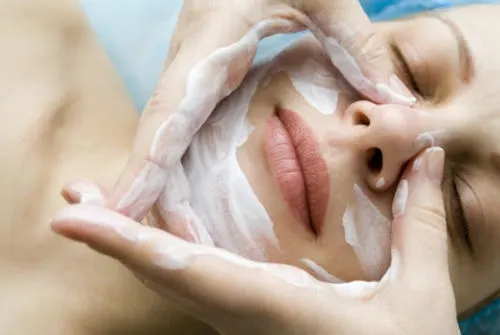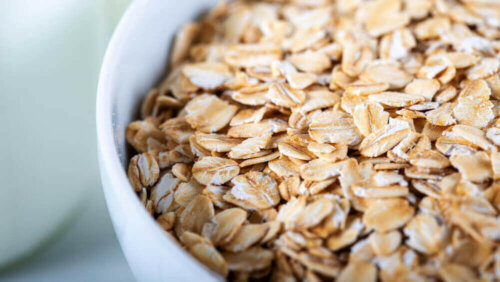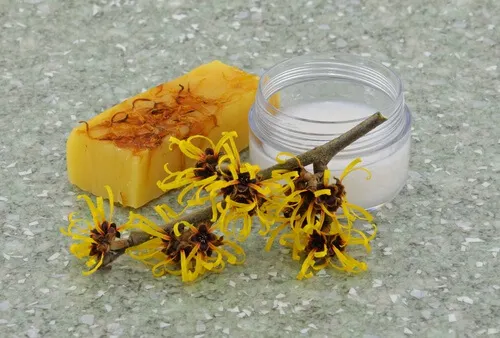How to Treat Oily Skin

Oily skin is a very common problem. However, we should not get used to it. Here are some natural alternatives that can help to treat it in conjunction with the indications provided by the dermatologist.
We say that we have oily skin when the skin begins to produce more natural oils, which it uses to protect itself from external agents. This natural oil is called sebum, and is a product of the work of the sebaceous glands.
The objective of the body and skin is to maintain hydration. However, when this occurs in excess, the result is oily and ugly-looking skin. In fact, it can lead to acne, breakouts, or unwanted shine.
Find out how you can help treat oily skin and what causes it to appear in this article. Remember that if it’s a serious problem or before resorting to any remedy (natural or otherwise) to treat it, you should see a dermatologist.
Why do I have oily skin?
There are several factors that affect the excessive production of sebum. These include hormonal changes caused by stress, the use of oral contraceptives, pregnancy, or diet, as well as genetic factors. A lack of cleansing and exfoliation can also be triggers for oily skin.

The positive thing about having oily skin is that, as you age, you’re less likely to get wrinkles than if you had dry skin. Beyond this, however, it’s recommended that you start treating your oily complexion as soon as possible.
We think you may be interested in reading this, too: 7 Ways to Use Rose Petals in Your Beauty Routine
Natural techniques to treat oily skin
These homemade techniques will help your facial skin look more beautiful, youthful, and cared for. Take note and consult a dermatologist before putting them into practice!
Cleanse your skin every day to treat oily skin
Remember to follow a daily cleansing routine to keep sebum under control. In fact, the American Academy of Dermatology offers the following tips:
- Start by cleansing the skin with lukewarm water to remove excess oil.
- Be careful when using moisturizing products to wash the dermis, and don’t apply too much of them, especially near the eyes.
- It’s best to limit washing to twice a day (this can be morning and evening) and after heavy perspiration.

In addition to the keys provided by this entity, we could also add the following:
- Dry the skin using a clean, dry towel, cloth, or handkerchief by patting gently without rubbing.
- Then, apply an astringent lotion (it should be non-comedogenic, if you’re going to buy it).
- You can also make an infusion of sage (a herb that’s widely used to treat skin conditions, according to studies) and let it cool. In either case, apply with gentle pats to close the pores and produce less sebum.
We think you may also enjoy reading this article: 10 Beauty Treatments that Can Regenerate Skin Collagen
Exfoliate to treat oily skin
Another step to avoid oily skin is exfoliation. It will serve to keep the skin clean and free of impurities, improve the appearance of the complexion and prevent excessive oil production.
Some natural options for this are:
- Apple cider vinegar is a product that has benefits for various skin conditions. A popular recipe for its preparation is to make a 50/50 mixture with water if you have very sensitive skin. Apply with a cotton pad and leave on for 10 minutes. Remove with cold water. Apply 2 or 3 times a week, but consult your dermatologist before using it regularly.

- Almond flour. According to popular belief, you can grind almonds to a fine sand. Add a tablespoon of honey (also useful for skin problems) and apply it. Finally, leave for 10 minutes and rinse with warm water. This is useful for removing dead skin cells and balancing oily skin. Although there are not many studies on the subject, there are others that recommend the use of almond oil to rejuvenate the skin.
Aloe vera treatment
There’s no doubt that aloe vera is a great ingredient for skin health. In fact, there’s a lot of research that confirms this. This is a beneficial plant because of its astringent properties. It also promotes wound healing and helps regenerate the skin.
In theory, aloe can also be useful to combat oily dermis, burns, and scars, so it can be very good to have an aloe vera plant at home.
To use it according to traditional techniques, you simply have to cut a stalk and open it horizontally. Extract the gel, apply it directly to your face and let it dry before removing it with cold water. You can repeat this treatment two or three times a week. However, it’s recommended to consult a professional before using it regularly.
Eat a healthy diet
To avoid an oily complexion, it’s also necessary to eat a balanced diet rich in fiber. In fact, there are academic publications that recommend eating more plant-based foods (fruits, vegetables…), as well as whole grains, legumes, and nuts. The vitamins and minerals they provide help to keep the dermis healthy.
Also, drink plenty of water and consume good quality oils, such as extra virgin olive oil. In addition, it’s best to avoid fatty, fried foods, red meat, and fast food.
Exercise to treat oily skin
Physical activity can help you release toxins that accumulate in the skin and cause oily skin. The WHO recommends exercising two to three times a week.
Use face masks and perform massages to treat oily skin
The following are popular techniques that may help reduce the production of oils in the skin. The ingredients for the masks are readily available, and the massages will also help improve blood circulation.
None of these masks can replace the treatment prescribed by a professional. Remember that these are combinations of ingredients based on popular recipes, and that more studies are still lacking in this regard (except in cases where the contrary is indicated).
An oatmeal which hazel mask for oily skin

Ingredients
- 2 tablespoons of oatmeal (oatmeal has skin health benefits according to studies)
- ½ tablespoon of witch hazel water (this has benefits for the skin that have been proven in children)
How to prepare it
- This is an astringent mask that exfoliates the skin and leaves it soft and smooth.
- First, mix the ingredients to obtain a paste and apply in gentle circles all over the face.
- Then, leave on for 15 minutes and rinse with warm water. Repeat every three days.
A yogurt mask for oily skin

Ingredients
- 2 tablespoons of natural yogurt
- ½ tablespoon of witch hazel water
How to prepare it
- The yogurt can be any natural yogurt you have at home. Take it with your fingers when you have mixed it with the witch hazel and apply, as if it were a cream, all over your face.
- Rinse off after ten minutes with lukewarm water.
A honey mask for oily skin

Ingredients
- 1 egg yolk
- 1 tablespoon of honey
How to prepare it
- Separate the yolk from the whites and mix the yolk with honey.
- Apply with a brush or with your fingers, always with circular movements.
- Finally, let it dry before removing it with warm water.
Have you already taken note of how you can help get rid of oily skin? We’re sure that these tips and techniques will help you do just that. So, what are you waiting for to start putting them into practice?
All cited sources were thoroughly reviewed by our team to ensure their quality, reliability, currency, and validity. The bibliography of this article was considered reliable and of academic or scientific accuracy.
- Piel grasosa. Medline Plus. https://medlineplus.gov/spanish/ency/article/002043.htm
- FACE WASHING 101. American Academy of Dermatology. https://www.aad.org/skin-care-basics/face-washing-101
- HOW TO SAFELY EXFOLIATE AT HOME. American Academy of Dermatology. https://www.aad.org/skin-care-secrets/safely-exfoliate-at-home
This text is provided for informational purposes only and does not replace consultation with a professional. If in doubt, consult your specialist.








